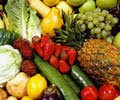 (Here's to you, Ty!)
(Here's to you, Ty!)
You feel low; your body needs a boost. You walk over to the vending machine and buy yourself a Coke. You guzzle it down as you slowly feel your energy return. You feel better knowing that your fix will last at least a couple of hours.....
Americans drink more soft drinks than ever before! Kids are heavy consumers of soft drinks and have a huge risk of being obese, weak-boned, cavity prone and caffeine dependent. It's up to you to teach your kids the truth about drinking soft drinks.
In school, we were all taught to say "No" to drugs and the adverse effects they have on the body. I can't say I ever remember being taught to say "No" to the other drinking problem that is now the drug of choice for many children and adults.
Let's jump into the dirty and hard facts on soft drink consumption!
Effects On Your Stomach:What we may not be aware of is that sodas contain an array of chemical acids as additives, such as acetic, fumaric, gluconic and phosphoric acids, all of them synthetically produced. That is why certain sodas work so well when used to clean car engines. For human consumption, however, the effects are much less satisfying and quite scary. Drinking sodas, especially on an empty stomach, can upset the fragile acid-alkaline balance of the stomach and other gastric lining, creating a continuous acid environment. This prolonged acid environment can lead to inflammation of the stomach and duodenal lining which becomes quite painful. Over the long term, it can lead to gastric lining erosion.
Effects On Your Teeth And Bones:Normally, saliva is slightly alkaline, with a pH of about 7.4. When sodas are sipped throughout the day, as is often the case with teenagers, the phosphoric acid found in soft drinks lowers the pH of the saliva to acidic levels. (It only takes 20 minutes for the phosphoric acid to begin dissolving the tooth enamel.) In order to buffer this acidic saliva, and bring the pH level above 7 again, the body pulls calcium ions from the teeth, making you more prone to tooth sensitivity and cavities.
You might as well plan on having dentures if you continue drinking soft drinks. :)
As with your teeth, the high amount of phosphoric acid found in soda pop also creates calcium loss in your bones making you susceptible for bone loss (osteoporosis), fractures and breaks.
Dehydration And Caffeine Dependence:Caffeine, which is found in many soft drinks, is naturally a diuretic, meaning it increases the excretion of water from the body. By drinking a 12 oz. glass of pop, you will end up peeing out more liquid than you consumed from the soft drink alone. You will become dehydrated which will make you grab another drink to quench your thirst. Not only will you be emptying your body of water but you are also eliminating many trace minerals and vitamins as well, leaving you prone to many deficiencies.
Those of you who are counting your soft drink intake as part of your 8 glasses or more of water intake a day, think again! If anything, you are making it a lot harder on yourself.
Have you ever tried going without your usual can of pop on the weekend? If so, you may have experienced a splitting headache, a slight rise in blood pressure, irritability and maybe even some stomach problems. These symptoms describe the typical withdrawal process suffered by about half of regular caffeine consumers who go without their usual dose. Caffeine is a mildly, addictive stimulant. Those of you who drink caffeinated drinks on a regular basis will notice withdrawal symptoms when trying to cut down or quit completely.
Weight Gain:The empty calories of soft drinks are creating health problems especially when it comes to weight gain and obesity; your body receives absolutely no nourishment from soft drinks. Weight gain is a prime risk factor for type 2 diabetes which is becoming a huge problem for teens and adults. As people get older, excess weight also contributes to heart attacks, strokes, and cancer.
Also, with the constant rise and lows in your blood sugar levels from consuming sugary drinks, your body will become very efficient at storing the " soda pop" calories as fat. Cut out the sugary drinks and watch how easy it is to lose the weight!
When consuming drinks that contain high amounts of sugar, you'll also notice you have more cravings. With the lack of balance within your body, your body is trying to tell you that it is needing something; but what? Since you are not in tune with your body, you'll most likely feed it more of something it doesn't need....creating an even bigger disaster, domino effect.
There is nothing positive I can say about soft drinks. They leave you dependent, dehydrated, weak and fat!
 2 cups whole white wheat flour or whole pastry flour (it is not white flour so don't be fooled - you can find it in the bulk section at your health food store)
2 cups whole white wheat flour or whole pastry flour (it is not white flour so don't be fooled - you can find it in the bulk section at your health food store)











